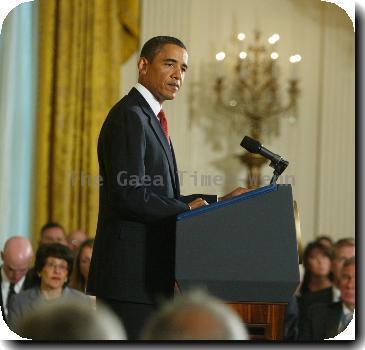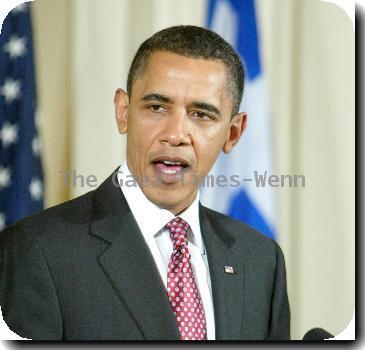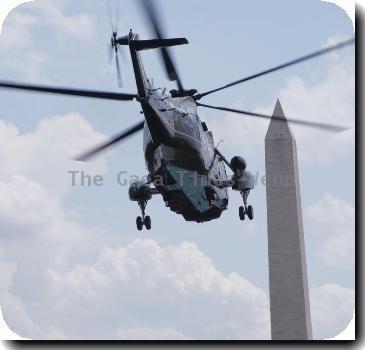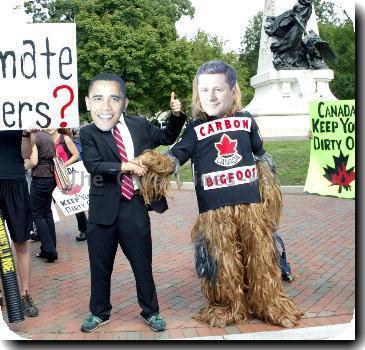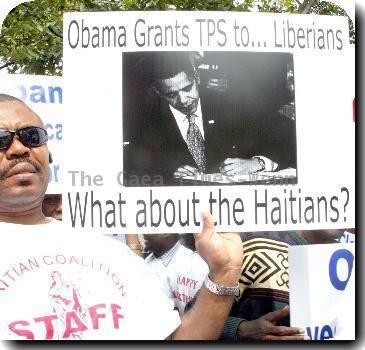As BP offers few details on plugging Gulf oil gusher, a mesmerized nation waits for progress
By Greg Bluestein, APSaturday, May 29, 2010
A nation mesmerized: Can BP plug the Gulf gusher?
COVINGTON, La. — As the nation remained transfixed by a busted oil well spewing millions of gallons of crude into the Gulf of Mexico, BP said Saturday that its latest bid to plug the worst oil spill in U.S. history still hadn’t worked and scientists suggested any progress was incremental at best.
BP PLC chief operating officer Doug Suttles told reporters Saturday in Port Fourchon that the effort known as a “top kill” has not stopped the flow of oil, and that he doesn’t know if the risky maneuver will succeed. He said the company was already preparing its next option to cap the well.
Engineers may not know until at least Sunday if the fix is successful, and progress was difficult to measure from BP’s “spillcam” of mud, gas and oil billowing from the seafloor. Americans have been hypnotized as they watched for any sign of success.
Scientists say the images may offer clues to whether BP is getting the upper hand in its struggle to contain the oil, said Tony Wood, director of the National Spill Control School at Texas A&M University in Corpus Christi. If the stuff coming out of the pipe is jet black, it is mostly oil and BP is losing. If it is whitish, it is mostly gas and BP is also losing.
If it is muddy brown, as it was much of Friday, that may be a sign that BP is starting to win, he said. That “may in fact mean that there’s mud coming up and mud coming down as well,” which is better than oil coming out, Wood said.
The company, however, has cautioned that it’s difficult to gauge progress from the choppy video 5,000 feet undersea. Officials also have warned people not to read too much into any changes they might see on the live video feed, saying it also is not indicative of overall progress.
Philip W. Johnson, an engineering professor at the University of Alabama, said the camera appeared to show mostly drilling mud leaking from the well Friday morning, and two of the leaks appeared a little smaller than in the past, suggesting the top kill “may have had a slight but not dramatic effect.”
But Bob Bea, a professor of engineering at University of California at Berkeley who has studied offshore drilling for 55 years, said late Friday that what he saw didn’t look promising.
He likened the effort to pushing food into a reluctant baby’s mouth — it only works if the force of the stuff going down is more than the force of what’s coming up.
“It’s obvious that the baby’s spitting the baby food back” because the pressure from the well is stronger, Bea said.
Things didn’t look much better Saturday as the well appeared to be spewing only a black plume, said Eric Smith, associate director of the Tulane Energy Institute.
“They warned us not to draw too many conclusions from the effluent, but … it doesn’t look like it’s working,” he said.
Chris Roberts, a councilman in Louisiana’s Jefferson Parish, also seemed skeptical.
“We’re wondering whether or not they’re attempting to give everybody false hope in order to drag out the time until the ultimate resolution to it” — the completion of the relief wells, Roberts said.
BP says the best way to stop the oil for good is a relief well, but it won’t be complete until August.
Meanwhile, President Barack Obama visited the coast Friday to see the damage as he tried to emphasize that his administration was in control of the crisis, which began April 20 when the Deepwater Horizon drilling platform blew up and killed 11 workers.
“I’m here to tell you that you are not alone, you will not be abandoned, you will not be left behind,” he told people in Grand Isle, where the beach has been closed by gobs of oil and the frustration and anger are palpable.
Hundreds of workers hit the beaches ahead of Obama’s visit, cleaning debris from the shoreline before they hopped on buses and left soon after the president arrived.
“This is the cleanest I’ve ever seen the beach,” Louisiana Gov. Bobby Jindal said. “We saw a surge of activity the last couple of days. Let’s hope it continues now that he’s gone.”
The top kill operation began Wednesday, with BP pumping heavy drilling mud into the blown-out well in an effort to choke off the source of the spill which has released far more than the 1989 Exxon Valdez disaster did off the Alaska coast. Even in the best-case scenario under by the government’s estimate, at least 18 million gallons has leaked so far. The worst case could exceed 40 million gallons of oil.
BP has brought in about 2.5 million gallons of drilling mud for the top kill. BP chief operating officer Doug Suttles said Friday the procedure was going basically as planned. The pumping has stopped several times, but he said that was not unusual.
He said the company has also shot in assorted junk, including metal pieces and rubber balls, which seemed to be helping to counter pressure from the well.
A top kill has never been attempted 5,000 feet underwater, and public fascination is high.
BP, under pressure from Congress, made available a live video feed of what is going on underwater, and about 3,000 websites were showing a version of it that the PBS “Newshour” offered for free. On Thursday alone, show spokeswoman Anne Bell said, more than a million people watched it.
Online: www.deepwaterhorizonresponse.com/go/site/2931/
AP Radio correspondent Shelly Adler and Associated Press Writers Seth Borenstein, Jonathan Landrum, Brian Skoloff and David Bauder contributed to this report.
(This version CORRECTS that Suttles spoke in Port Fourchon.)
Tags: Accidents, Barack Obama, Coastlines And Beaches, Covington, Energy, Environmental Concerns, Louisiana, North America, Oil spill, Robert, United States
